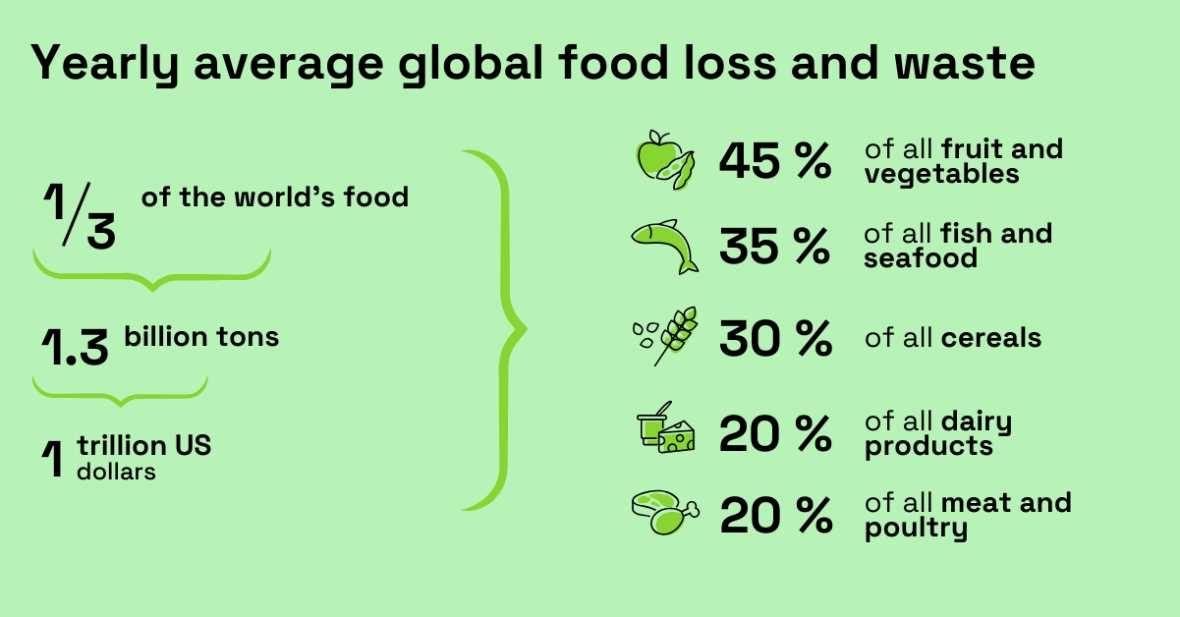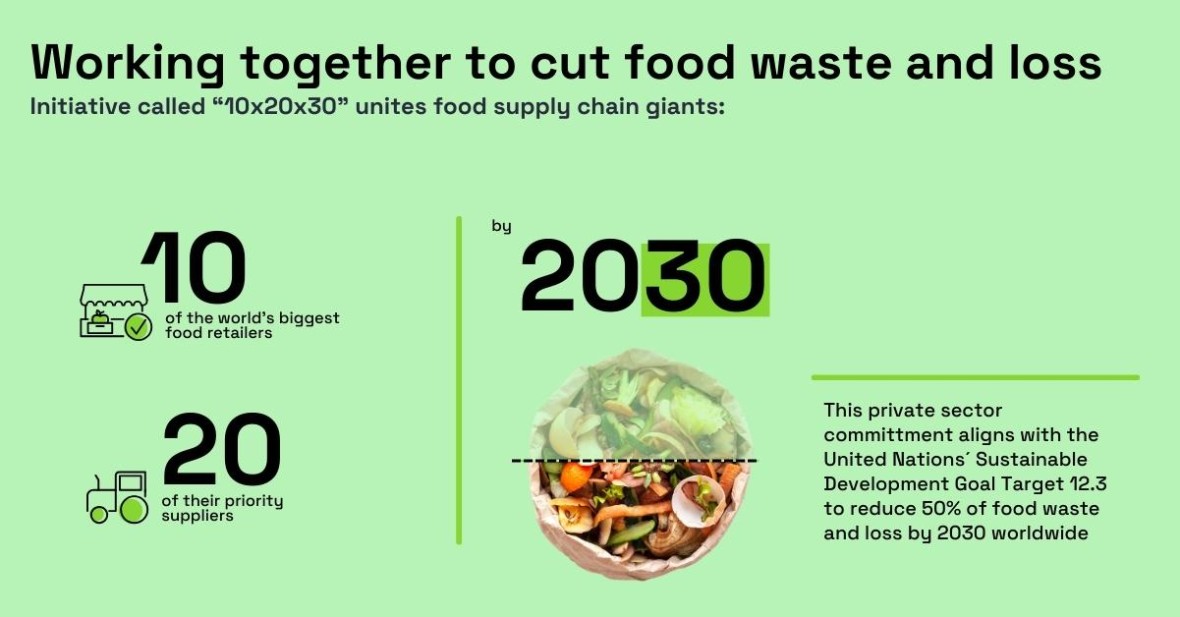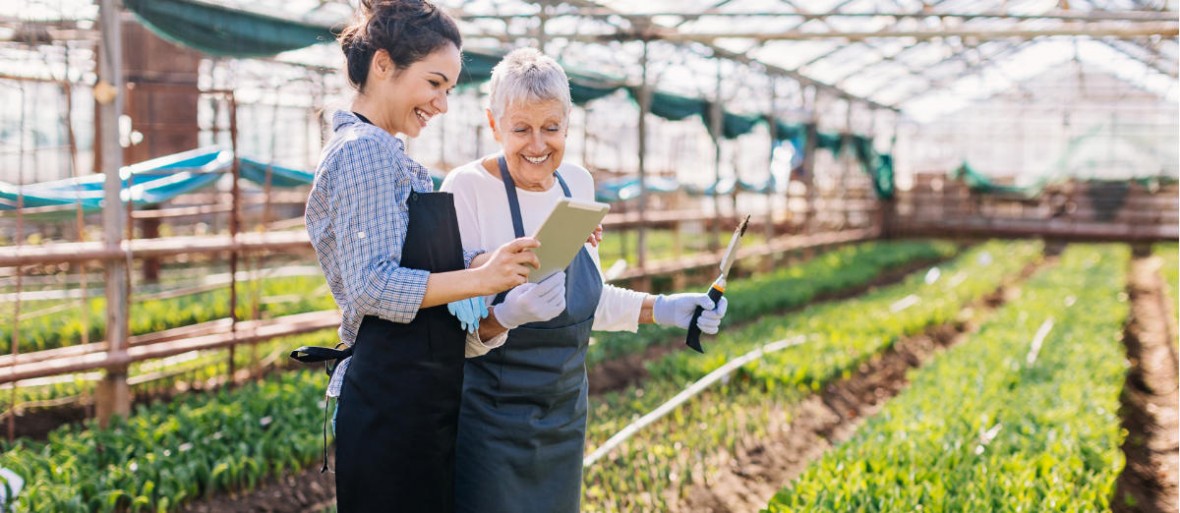Between 2007 and 2018, the UK reduced its national levels by 27%. Key to the UK’s success has been the commitment of supermarkets and the food industry. While consumer education programs, including Love Food, Hate Waste, have also played a role.
Far too much food that is produced for human consumption goes to waste. But is it true that globally one-third of our food never gets eaten? While every country is facing their own battles against food waste, the scale of the problem varies from country to country.
In 2023, who are the biggest food waste countries in the world?

What are the key facts about global food waste in 2023?
Back in 2011, the Food and Agriculture Organization of the United Nations (FAO) published an insightful but damning report titled Global Food Losses and Food Waste. At the time, the FAO study estimated that around one-third of the world’s food is wasted every year. This added up to a staggering 1.3 billion tons, worth almost one trillion US dollars.
What’s more, this global problem is costly to the planet. Food waste generates an estimated 8-10% of global greenhouse gas (GHG) emissions. If food loss and food waste were classed as a country, it would rank as the third biggest emitter of GHG emissions in the world, coming after China and the US. With a carbon footprint of about 3.3 billion tons of CO2, food waste is a major contributor to climate change.
How much progress have we made since the report was first published? Not nearly enough.
Following on from the FAO report, the United Nations set a food loss and waste reduction target as one of the world’s 17 Sustainable Development Goals, known as the SDG Target 12.3.
The SDG Target 12.3 calls on the world to cut food loss and food waste by half by 2030. Champions 12.3, an international coalition that includes 30 senior leaders from governments, businesses and research institutions, seeks to motivate the global community to do more to tackle the problem.
Primarily, this involves taking a Target-Measure-Act approach to food loss and waste reduction. By setting targets and then measuring food loss and waste, it should be possible to take appropriate action to cut food waste by half by 2030.
So, how is the world doing on reducing food loss and food waste in 2023?
According to the 2023 assessment of the world’s progress toward achieving Sustainable Development Goal Target 12.3, that ambitious goal to cut food waste by half is still looking elusive in every region around the globe.
Tracking, measuring and calculating food loss and food waste per capita by country is a complex process.
One way to look at the issue is through the lens of how much food is wasted per capita in each country, as well as where it occurs in the supply chain. Such a perspective can help us better understand the causes of food waste. In addition, it can better inform our efforts to ensure that more of the harvest finds its way to the table.
It’s no easy task, but it’s high time the international community prioritized the topic.
The FAO and the UN Environment Programme (UNEP) teamed up in an attempt to calculate more precise estimates. To give a clearer insight into the overall problem, they differentiate between "food loss" and "food waste." Consequently, there is a separate index for each.
The Food Loss Index looks at what is lost during production or in the food supply chain before food reaches the retailers.
The Food Waste Index focuses on the food that is thrown away at the end of the supply chain by retailers and consumers.
While the Food Waste Index is still a work in progress, the first Food Loss Index is included in the latest FAO annual report, The State of Food and Agriculture 2019. Initial estimates indicate that, on average, around 14% of the world’s food is lost between harvest and retail. In general, more fruit and vegetables are lost along the global supply chain than any other food item. Perhaps unsurprisingly given their perishable nature. Given the resources used – and then wasted – in the production of these fresh products, it should be more surprising that this level of food waste is still accepted.
Food loss along the fresh grocery supply chain varies considerably from one region to the next. In developing countries, for instance, it tends to occur at the early stages of the food supply chain. This is often because of limitations in harvesting techniques, storage and transport infrastructure.
That’s why we see the following:
In Europe and North America food loss adds up to around 16%.
Such differences indicate that food loss needs to be tackled predominantly on a country and regional level. The solutions will vary and will also depend heavily on the local conditions, the produce, transport infrastructure and consumer behavior.
Many innovative ideas to eliminate food and agricultural waste have already been turned into practical solutions. The best ones confirm that it’s not sufficient to focus only on global averages. However, best practice always includes robust measures to ensure food safety throughout the supply chain.
Consumers continue to throw away perfectly edible food. This is especially true for industrialized countries. However, the complexity of food waste prevents a clear and direct comparison between consumers in different countries.
Unfortunately, food waste is measured and presented in diverse ways in different countries. Nevertheless, there are some interesting food waste statistics that are important to highlight.
It’s not that long until 2030, the year many countries pledged to meet SDG Target 12.3 to cut food loss and food waste in half. However, according to the most recent Food Waste Index Report, published in 2021 by the United Nation Environment Programme, progress has generally been far too slow. Apart from a few outliers. Which countries are taking clear action to reduce food loss and waste?

Although the figures for the UK are still too high, the country has made headway. In fact, the UK is the first country to get more than halfway toward meeting the SDG Target 12.3 of halving food waste by 2030. An achievement which gained it an honorary mention in the Champions 12.3 Food Loss and Waste: 2020 Progress Report.
Between 2007 and 2018, the UK reduced its national levels by 27%. Key to the UK’s success has been the commitment of supermarkets and the food industry. While consumer education programs, including Love Food, Hate Waste, have also played a role.

To tackle food loss and waste along the entire supply chain, the European Commission has also released clear guidance for obligatory reporting of food waste levels by member states.
EU-level binding targets for food waste reduction have been proposed, which will help countries focus on meeting the Sustainable Development Goal Target 12.3 to cut food loss and waste by half by 2030.

In 2021, in an attempt to reduce food loss and waste in hospitality, China introduced a law to fine excessive food preparation and consumption. In 2022, it published an Action Plan on Food Loss and Waste Reduction, aimed at reducing food loss and food waste throughout the entire food supply chain.
Just as the reasons why we waste food are complex, so are the solutions. Environmental targets can serve as a general framework to support collective action towards halving food waste by 2030, including the SDG Target 12.3.
However, success will depend on a holistic, multifaceted approach, as well as government initiatives.

Recent examples include the EU Farm to Fork Strategy from May 2020 and Australia’s National Food Waste Strategy. Both have the goal of halving food waste by 2030. Mainly, these programs will provide support, advice and financial instruments to ease the transition to more sustainable food systems.
France, in contrast, has taken a much stricter line. It introduced legislation in 2016 that required supermarkets to redistribute edible food to food banks and charities. Managers that break the law risk a two-year prison sentence and large fines.
Reducing food waste efficiently along the supply chain and in all our households can result in a win-win scenario. Halving food waste could help meet the demand for nutrition of our growing population. And equally minimize the negative environmental effects of agriculture.
It saves lives, reduces costs and helps protect the planet for future generations. Putting reducing food waste at the top of our priorities means having to deal less with food disposal at the end. Landfills of food waste are a major source of methane gas, which also contributes to climate change.
As the various reports show, food loss and food waste can occur at every step along the supply chain. Companies that play a leading role in the global fresh grocery supply chain can act as catalysts for change. IFCO is stepping up to the challenge by designing reusable packaging solutions that cut food waste dramatically. Key elements of any robust solution involve more sustainable packaging to ensure food safety along the supply chain, ensuring fresh products have a longer shelf life in retail stores and in private households. Particularly during transportation, the use of reusable packaging containers (RPCs) could further reduce food loss and waste. Most notably, our RPCs reduce product damage by up to 96 percent – which significantly cuts food waste.
Above all, a clear understanding and commitment to the circular economy will be critical for success for the sake of the environment.
Stay up to date
Want the latest fresh food packaging industry knowledge delivered straight to your inbox? Subscribe to our newsletter and get the latest news, trends, articles and more!
